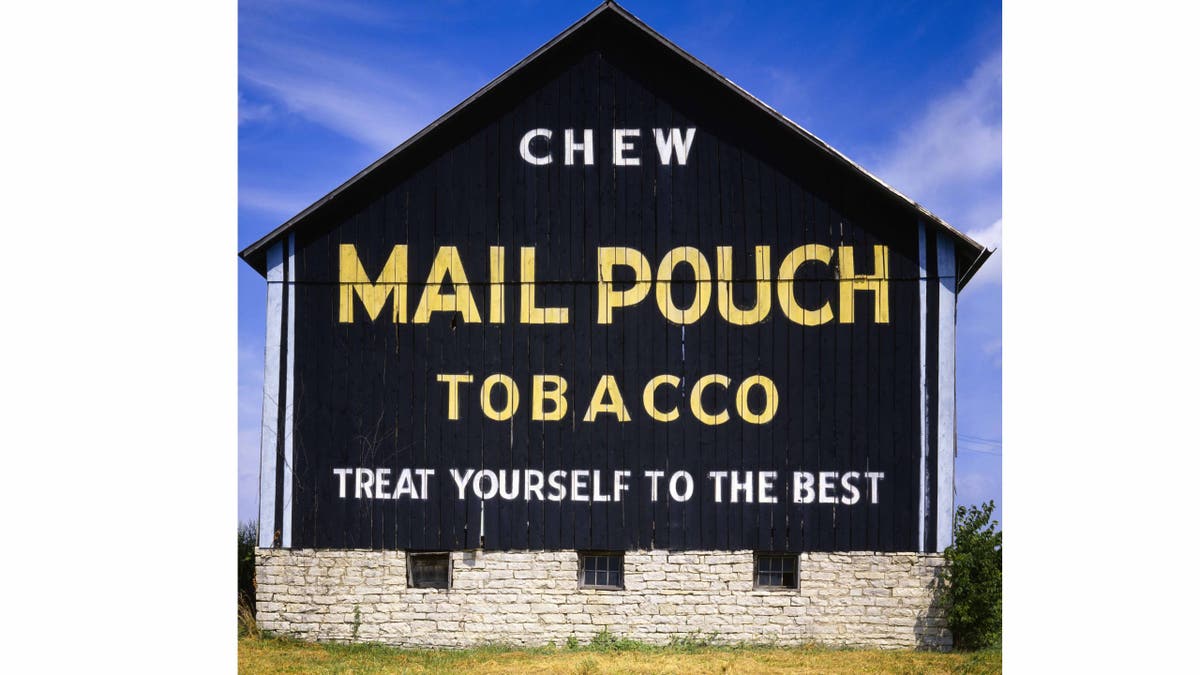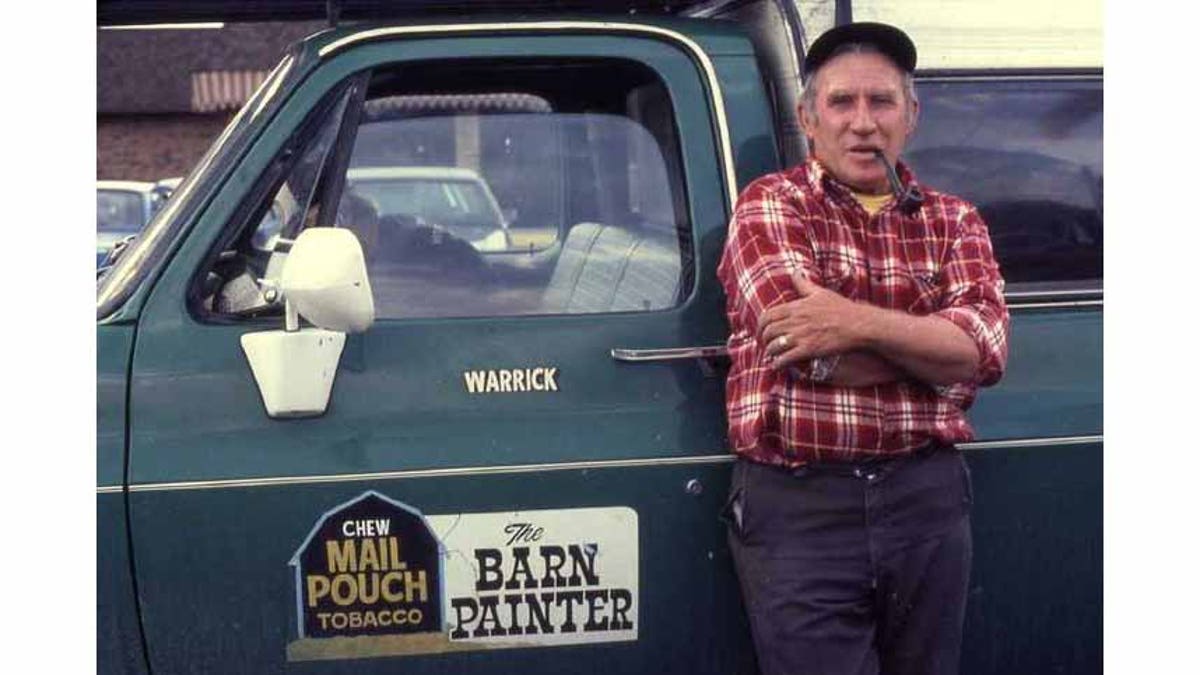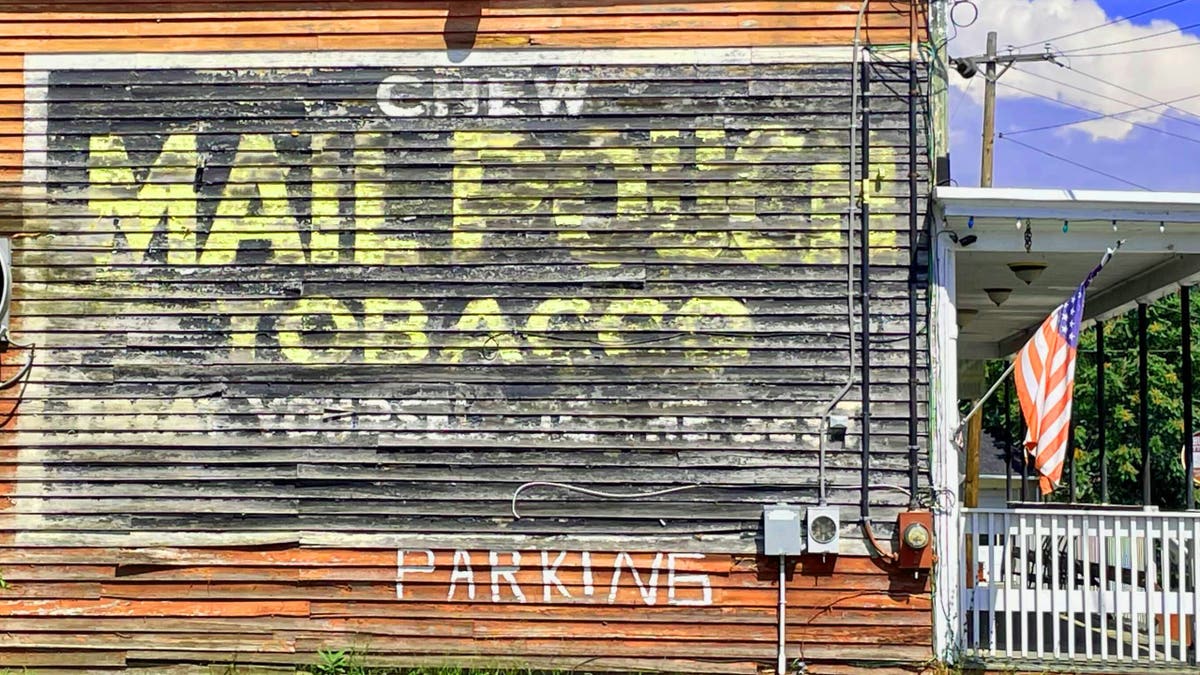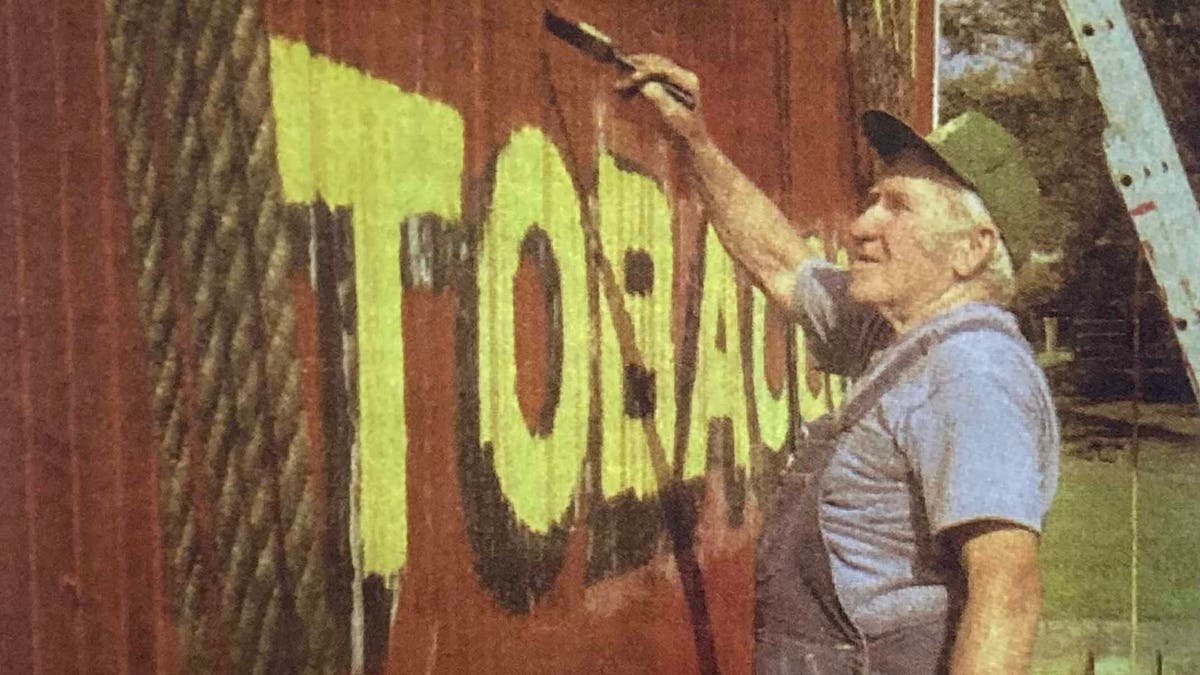Fox News Flash top headlines for March 25
Fox News Flash top headlines are here. Check out what's clicking on Foxnews.com.
Mail Pouch Tobacco barns still pitch nostalgia on country roads in West Virginia, Pennsylvania, Ohio and other nearby states.
They offer both beautiful American folk art and a haunting reminder of a rural United States as it was well into the 20th century.
Americans were tied to the land, not addicted to their cell phones. They smoked cigarettes, not marijuana.
THE GRITS BELT IS AN UNMARKED BUT UNDENIABLE DEMARCATION OF AMERICAN CULINARY CULTURES
The advertisements in this ancient empire were not generated by computer graphics. Instead, local artists painted them by hand.
The work helped make Harley E. Warrick of Ohio, a World War II U.S. Army veteran who survived the frigid, bloody Battle of the Bulge, a folk hero late in life.

Harley E. Warrick served in the U.S. Army in Europe in World War II. He spent his life after the war painting barnside advertisements for Mail Pouch Tobacco of Wheeling, West Virginia. They're now recognized as classic American folk art. (Courtesy Roger Warrick)
He was the lone remaining artist to paint Mail Pouch Tobacco signs.
"He was the last of the breed of a dying art form," his son, Roger Warrick, who is based in Kentucky, told Fox News Digital.
EASTER BUNNY TEACHES KIDS ‘TRUE MEANING’ OF EASTER IN NEW BOOK WITH FAITH FOCUS
Bloch Brothers Tobacco Co., which sold Mail Pouch, was founded in Wheeling, West Virginia, in 1879.
Nearly 6 million farms sprawled across the nation as recently as 1950, according to the U.S. Department of Agriculture. That number is down to 1.9 million today.
Rural roadside barns were the mass-marketing medium of the era. They provided natural billboards.

A 1980s Mail Pouch chewing tobacco advertising sign painted on the side of barns, 1891-1992, Mid-Atlantic and Midwestern states in the U.S. (K Vreeland/Classicstock/Getty Images)
The Mail Pouch "advertising gimmick started in 1891 and the last barn was painted in 1992," the Athens (Ohio) Messenger reported in 2021.
"At its peak, there were around 20,000 painted barns on country roads throughout the country, but mostly in the Midwest."
"He was the last of the breed of a dying art form."
Warrick, who grew up on a farm in Ohio, returned from World War II in 1946, his son said, and almost immediately joined a crew painting Mail Pouch Tobacco ads.
The former GI, only in his 20s, had plenty of work.
Farmers were paid a nominal fee for the use of their barn as a billboard. But more importantly, they received a fresh coat of paint each year.

Harley Warrick of Ohio fought in the Battle of the Bulge during World War II. He spent his life after the war enjoying the quiet solitude of painting Mail Pouch Tobacco around around Ohio, Pennsylvania and West Virginia. (Courtesy Roger Warrick)
"Warrick and a partner traveled together, sometimes sleeping in the back of a pickup truck or cheap motel," Ohio author Fred Hendricks wrote last year for the agricultural news outlet The Fence Post.
"I don’t paint barns, I paint signs on barns," the "salty" and "pipe-smoking" Warrick would retort when asked about his work, according to Hendricks.
GI CHRISTMAS CARD TO 8-MONTH-OLD DAUGHTER IN 1944 CAPTURED FEAR, HEARTBREAK AMID WWII HOLIDAYS
Warrick started out working with crews, his son said. But for most of his career he worked and traveled alone, often leaving home on Monday and returning on Thursday.
It appears the painter found the quiet, solitary work cathartic after regimented Army life and the horrors of war.
"He became his own boss," said Roger Warrick, who is also an artist.

A faded Mail Pouch Tobacco advertisement in rural Layton, New Jersey, on Sept. 4, 2023. (Kerry J. Byrne/Fox News Digital)
"After being ordered around in the Army, I think he just wanted to do his own thing. He was a solitary guy. He set his own hours. People generally left him alone."
The GI rarely discussed his wartime service, the son said.
He would, however, mention Europe's infamously frigid winter of 1944-45 if his family complained about the cold.
"After being ordered around in the Army, I think he just wanted to do his own thing."
Warrick served in the 99th Infantry Division in World War II. The unit gained heroic distinction for its staunch defense against a German onslaught in the Battle of the Bulge in December 1944.
About 3,000 GIs in the unit – 1 in 5 men – were killed, wounded or frost-bitten in the battle.
CLICK HERE TO GET THE FOX NEWS APP
The 99th crossed the Rhine River in March 1945 at the famous Remagen Bridge shortly before it collapsed.
The unit liberated the Dachau concentration camp and fought deep into Bavaria by the end of the war in 1945.

Artist and World War II veteran Harley Warrick achieved fame late in life for painting Mail Pouch Tobacco barn signs. (Courtesy Roger Warrick)
"He saw some stuff in the war, but he didn't tell us a lot about it," said Roger Warrick. "Just the lighter stuff. You always knew there was more to it."
Whatever horrors Harley Warrick saw, suffered or did, he spent much of his life after the war painting alone in sunny solitude in the peace and quiet of American farmland.
CLICK HERE TO SIGN UP FOR OUR LIFESTYLE NEWSLETTER
He died in 2000, but not before his status as the last man to paint Mail Pouch Tobacco signs gained him some local and national notoriety, including a segment for "On the Road" with journalist Charles Kuralt.
"He became an overnight sensation," said the son.
"It took him 50 years to get there."
For more Lifestyle articles, visit www.foxnews.com/lifestyle.

